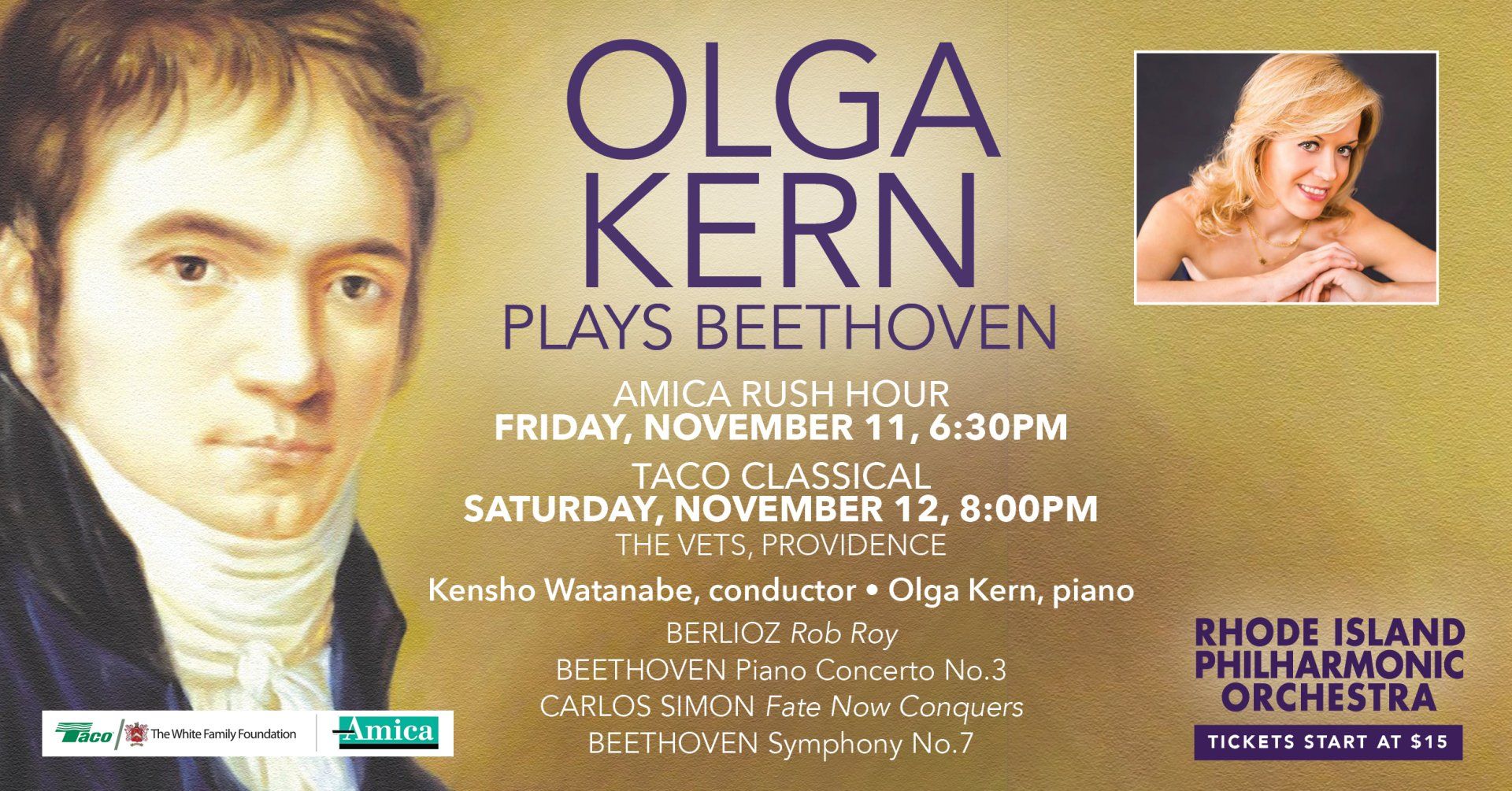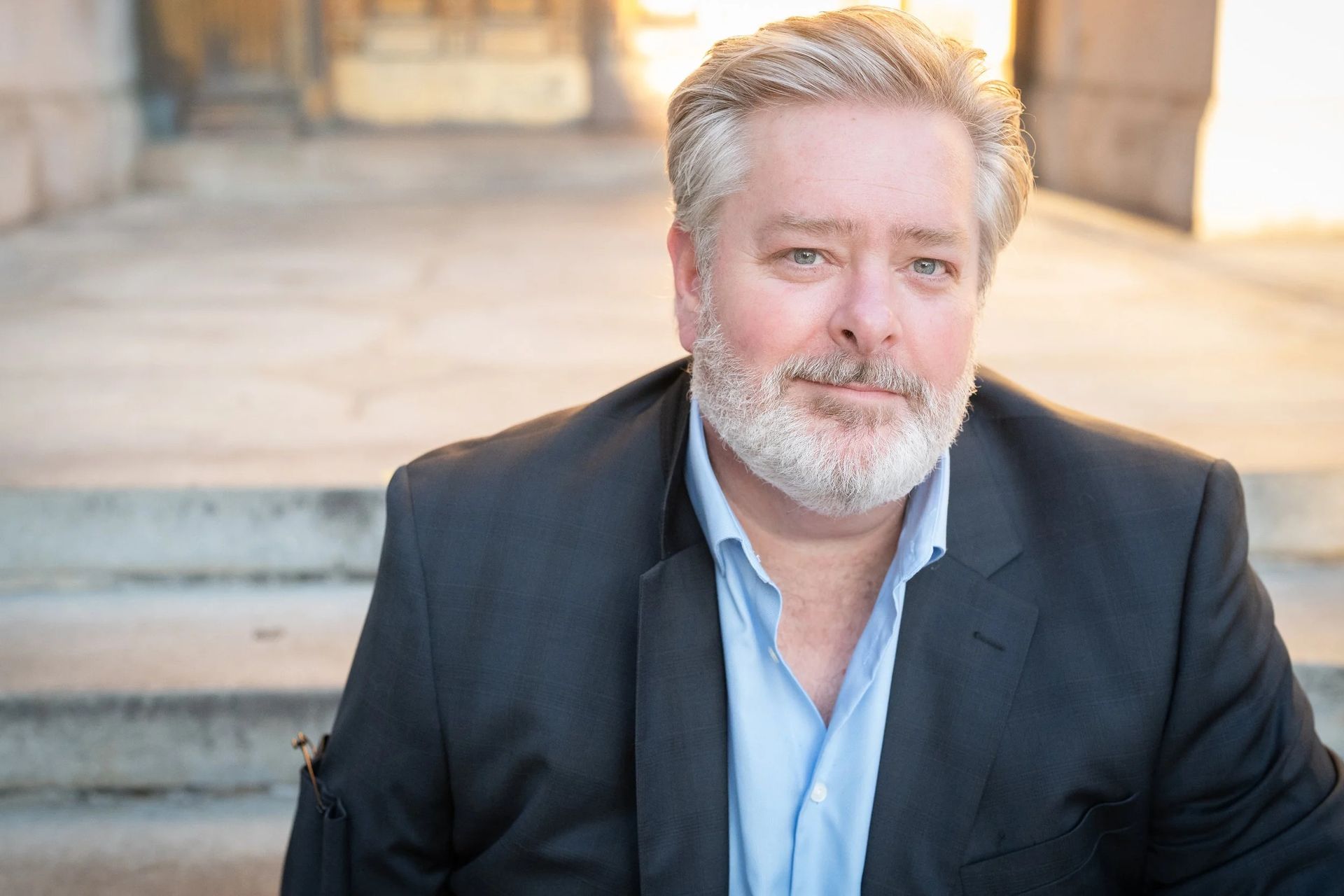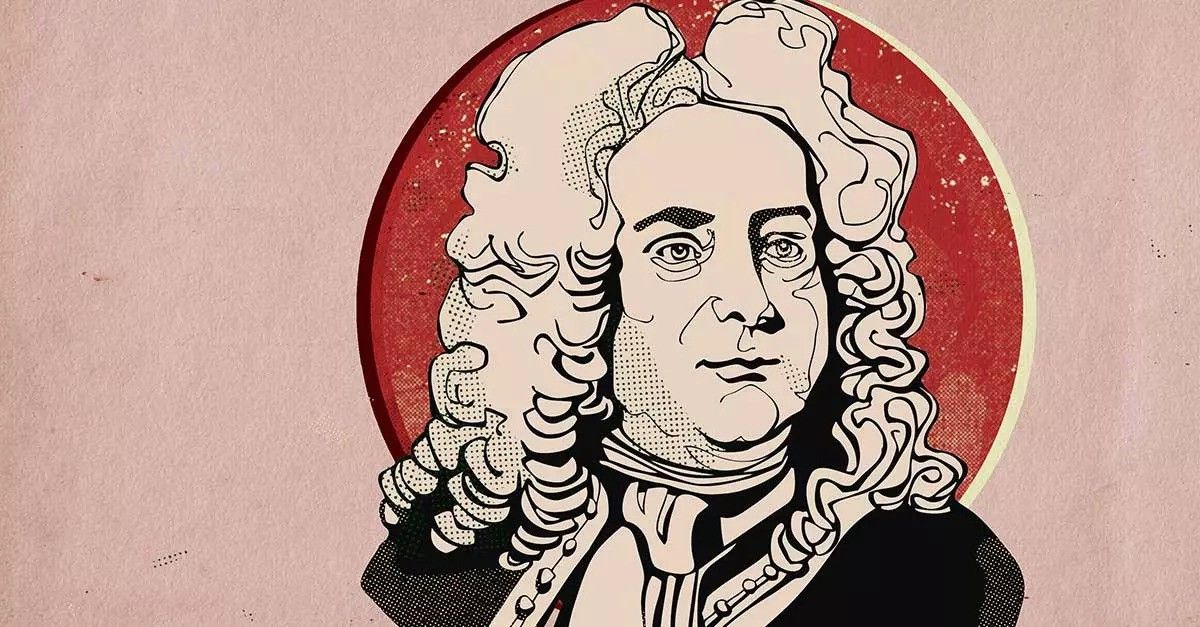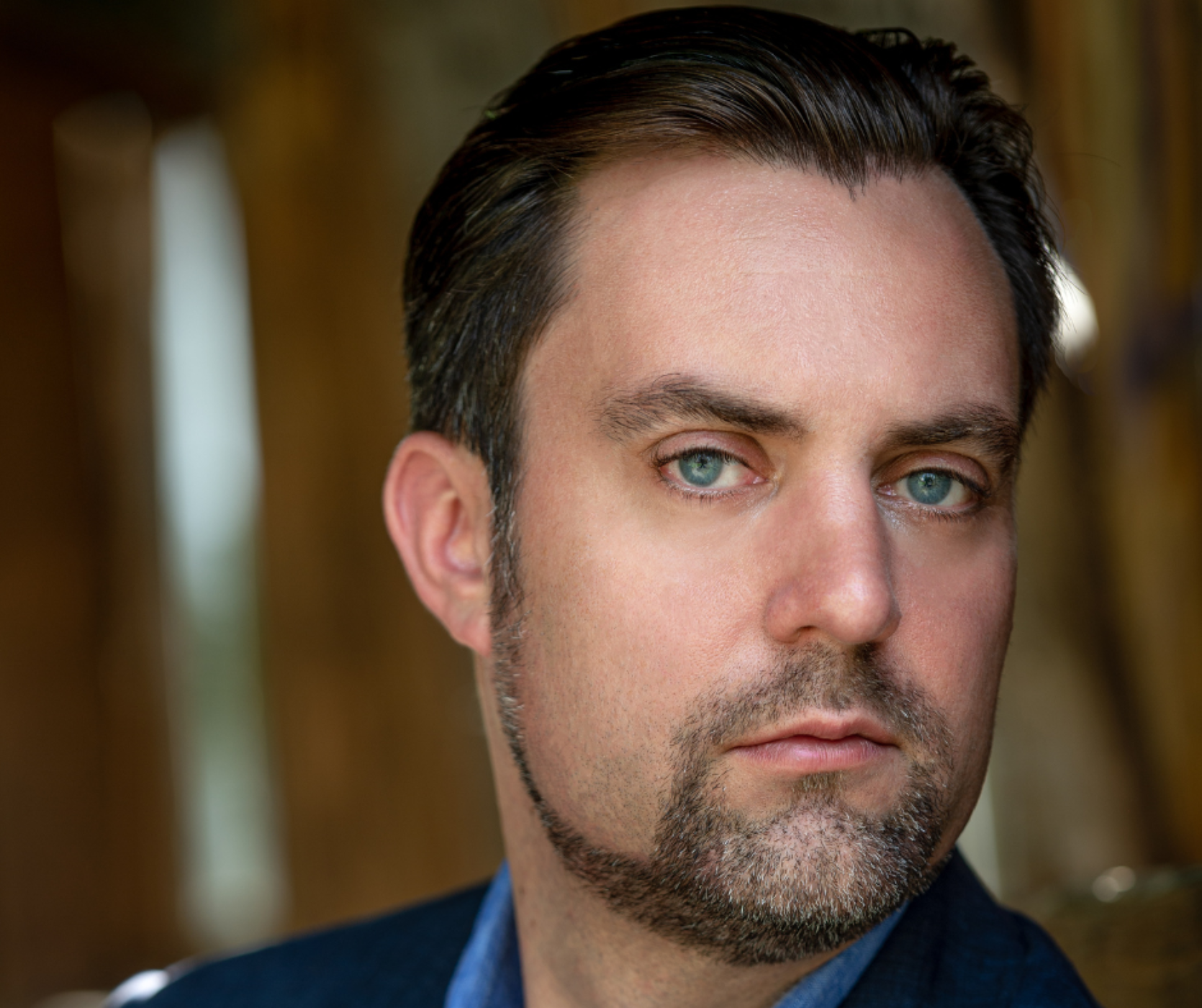THE STORY BEHIND: Beethoven's Symphony No.7
Share
On November 11 & 12, Kensho Watanabe and the Rhode Island Philharmonic Orchestra will present OLGA KERN PLAYS BEETHOVEN with pianist Olga Kern.

THE STORY BEHIND: Beethoven's Symphony No.7
Title:
Symphony No.7, op.92, A major
Composer:
Ludwig van Beethoven (1770-1827)
Last time performed by the Rhode Island Philharmonic:
Last performed March 17, 2018 with Victor Yampolsky conducting. This piece is scored for two flutes, two oboes, two clarinets, two bassoons, two horns, two trumpets, timpani and strings.
The Story:
The expression “from the sublime to the ridiculous” could have applied to the 1813 concert program on which Beethoven’s Seventh Symphony was premiered. It began with the new symphony that the master had touted as “one of my best” (an opinion he later maintained). The concert continued with marches written by Dussek and Pleyel for Mälzel’s “Mechanical Trumpeter.” It concluded with the orchestral version of Beethoven’s
Wellington’s Victory (the “battle symphony”). Contemporary reports confirm that the event was a great triumph for Ludwig van Beethoven and that the second movement of the Seventh Symphony even had to be encored.
Although the Seventh Symphony has its own unique personality, Beethoven carried over certain aspects of the Fifth and Sixth symphonies into it. From the Fifth came the motor impulse of a single driving rhythm. However, unlike the Fifth, each movement of the Seventh finds its own unique rhythm to generate themes. From the “Pastoral” Symphony, the Seventh inherits a celebration of Nature. In the Sixth, this often took the form of reflection and quiet reverence, but in the Seventh, it is a vibrant, life-affirming paean.This vibrancy is particularly apparent in the peasant round-dance character of the first movement after a lengthy slow introduction. One repetitive rhythm pervades the entire movement, generating nearly all the ideas Beethoven needs.
The second movement is based on one of Beethoven’s famous hymn-like themes, and this one suggests noble tragedy. Later, listen for brighter sections and growing complexity, leading to some of the most thrilling moments in all of Beethoven’s symphonic writing.
The sunny and exhilarating Scherzo movement comes at the right time, with a main section that features a bouncy quality and broad wit. However, a recurring contrast section stops that dance motion for a time, giving the music a magical, time-suspended quality.
Beethoven’s rhythmic impulse returns in the dance-like finale. However, it has more wildness than the first movement. Some older critics have found this to be somewhat “irresponsible” in spirit or even “terrifying.” However, Beethoven biographer J.W.N. Sullivan recognizes that here “we are in the region of pure ecstasy, a reckless, headlong ecstasy, a more than Bacchic festival of joy.”
Program Notes by Dr. Michael Fink © 2022 ALL RIGHTS RESERVED
Tickets start at $15! Click HERE or call 401-248-7000 to purchase today!







